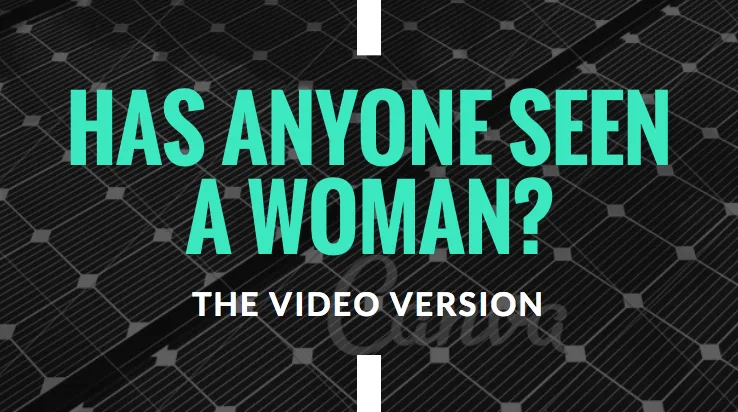November 24, 2017
by Deb Verhoeven and Stuart Palmer

When Deb Verhoeven first saw the data, broken down into clusters of bright red and blue, she cried.
A professor at the University of Technology Sydney, she was familiar with gender inequality, having spent years researching the issue in the film industry.
Even so, it was a shock to look at the networks that routinely lock women out of research funding in Australia.
Using a process called social network analysis (SNA), which measures the relationships between people, Professor Verhoeven and her team created data maps of the men and women who received coveted academic grants in Australia, and who they worked with.
They looked at Australian Research Council Linkage Infrastructure, Equipment and Facilities (ARC LIEF) grants (2008-17) and National Health and Medical Research Council (NHMRC) program grants (2003-18).
By analysing the gender of grant recipients, they found that men work mostly with other men.
Even more surprising was how often men named Dave dominated across both grants.
‘Took me by surprise’
According to her team’s analysis, 79 per cent of ARC LIEF grant recipients were male. As well, males received 82 per cent of NHMRC program grants. Data only available for the NHMRC grants suggest that 84 per cent of all the men who received a grant worked in male-only teams.
“I knew it would be bad, because I’d seen the raw data, but I hadn’t seen it visualised,” Professor Verhoeven said.
“It actually took me by surprise.”
Then there is the “Daversity” problem, as Professor Verhoeven put it in her report.
In the 10-year period studied, ARC LIEF grant projects included 131 men named David, yet only 15 Jennifers—one of the most common women’s names.
In the case of NHMRC program grants, David was the most popularly funded name (51 times). Suzanne, the top female name, was funded only six times.
The anonymised data, which has not yet been published, was recently presented at an event on peer review in Melbourne.

(Supplied: Stuart Palmer, Deb Verhoeven.)
Why is this happening?
After being sent the data, a spokesperson for the NHMRC said the organisation recognises the program grants scheme’s gender imbalance and “is working to address the loss of female talent from health and medical research”.
There are longstanding issues that may contribute.
ARC chief executive officer Professor Sue Thomas said that while there were “small differences” in the numbers when extracted by ARC, more male researchers than female researchers are listed on LIEF projects.
This may reflect, in her view, the proportion of female researchers in academia, as well as the number of women in disciplines like the humanities and social sciences that don’t need as much equipment and facilities (which these grants fund).
Professor Thomas also suggested that the LIEF scheme is not equivalent to NHMRC program grants, given they provide funding for infrastructure rather than research.
LIEF grants are significant because they fund the mechanisms by which research can occur, Professor Verhoeven said in response.
“Our study shows that a particular cohort of researchers—men—enjoy the spoils of Australian research infrastructure funding,” she said.

(Supplied: Deb Verhoeven, Stuart Palmer and Sarah Taylor.)
Do men support men?
For women in academia, however, these results may give form to feeling when it comes to gender.
Clare Bradford, an emeritus professor at Deakin University, said there’s a strong sense in the research community that men look after other men.
“Men mentor men, and give references for other men,” she said.
Professor Bradford, who has received ARC funding during her career, said this tradition of exclusion can have a lasting impact on young women researchers.
For new scholars, who do not have a significant grant track record, the best launch pad is to join a funded research team. If men work mostly with other men, the barriers for women only grow, she said.
“[It] mostly means that, down the track, more opportunities come to men — they get invited to publish in collections, or they get invited to sit on boards, or to travel, to give keynotes at big international conferences.”
“As long as your name is on a grant, it gives you a place in that panoply of power.”
How do we change?
Methods like SNA let you look beyond the numbers. When you see dense clouds of red lines that show how regularly men work only with other men, a solution suggests itself.
“It’s showing you who are the key players,” Professor Verhoeven explained.
“Who are the guys who persistently and consistently don’t work with women?”
In other words, the men in those clusters often act as gatekeepers. If we know who they are, we know where to start. And it’s not with the women, she said.
“Stop focusing on women’s behaviour and focus on altering male behaviour in these networks,” Professor Verhoeven said.
Universities must also play a role in shifting the culture.
“There is a large number of men who need to alter their behaviour. And the first step begins with how they form their teams — how they make decisions about who to work with,” she said.
Next, she and her researchers will look at what happens to these networks if you take out the key gatekeepers.
“If we can hypothetically look at what happens when we remove them, we can start to look very specifically at how we can change the world,” she said.




